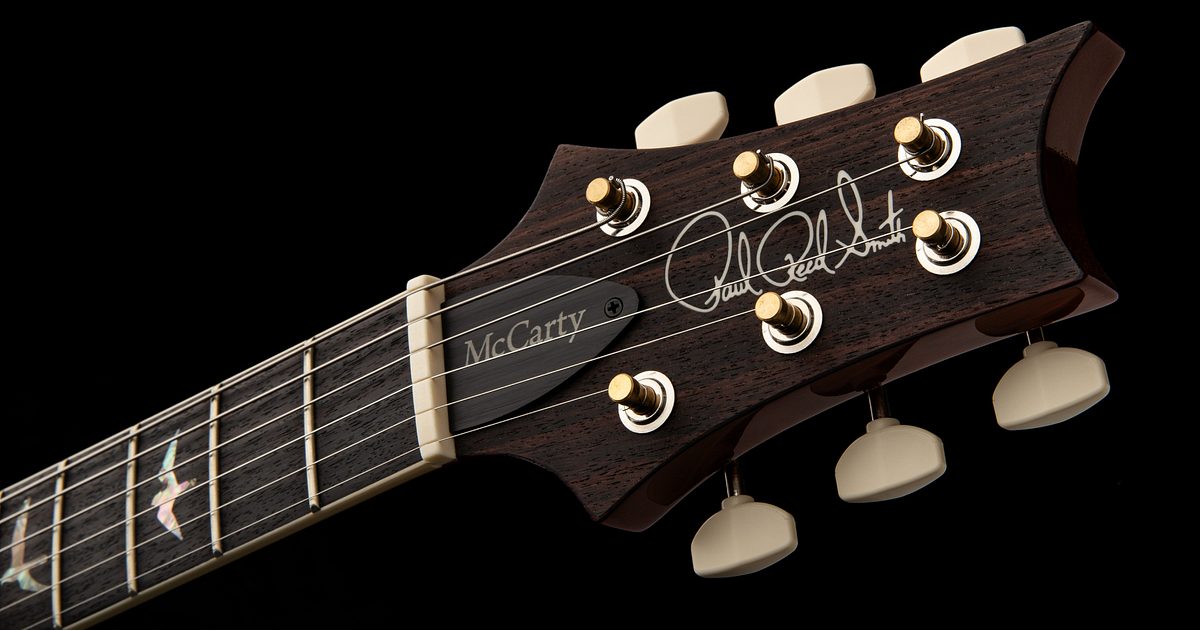The marketing blurb from PRS is embarrassing bullshit but the underlying physics are real, the effect is well established and of course can be measured if that is in question.
It is a pity because Paul Reed Smith helped pioneering real engineering in guitar building -- for example locking tuners, graphite nut, shallow headstock angle, 3/3 mounting of tuners, all this, together with his excellent interpretation of the vintage tremolo (the only really working one, to this day) fixed all the issues we had with Fenders. I have one of the earliest EG-3 models that made it over to Europe, very early 90'ies, and I know what I'm speaking of.
A guitar neck is a resonant system, spring and mass. When you change the mass at the head-stock this shifts resonant frequencies. Neck resonances are like room modes, better not excite them because they kill the fundamental of a note ("wolf", "dead spot"). Same effect than with tuning strings differently, you change the excitation pattern of the resonances and thus dead spot tendency pattern across the neck ==> different sound (not by much, but very noticeable for the player).
I've actually replaced the cast metal wings of the tuners of guitars with wooden or plastic ones whereas on others (basses, mostly) I occasionally add extra weight (like Fender "Fat Finger") to the headstock to move resonances out of the way. When playing fretless bass, a dead spot on a prominent note of a song is a show stopper.

